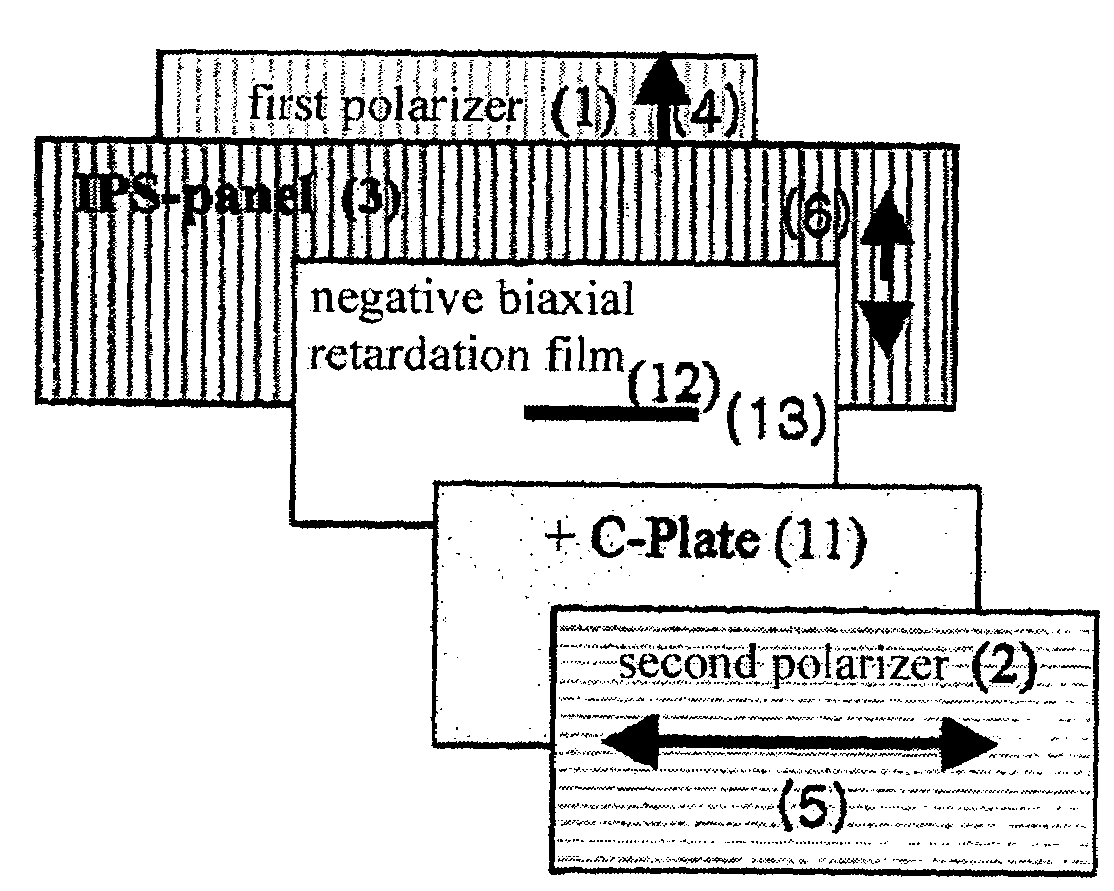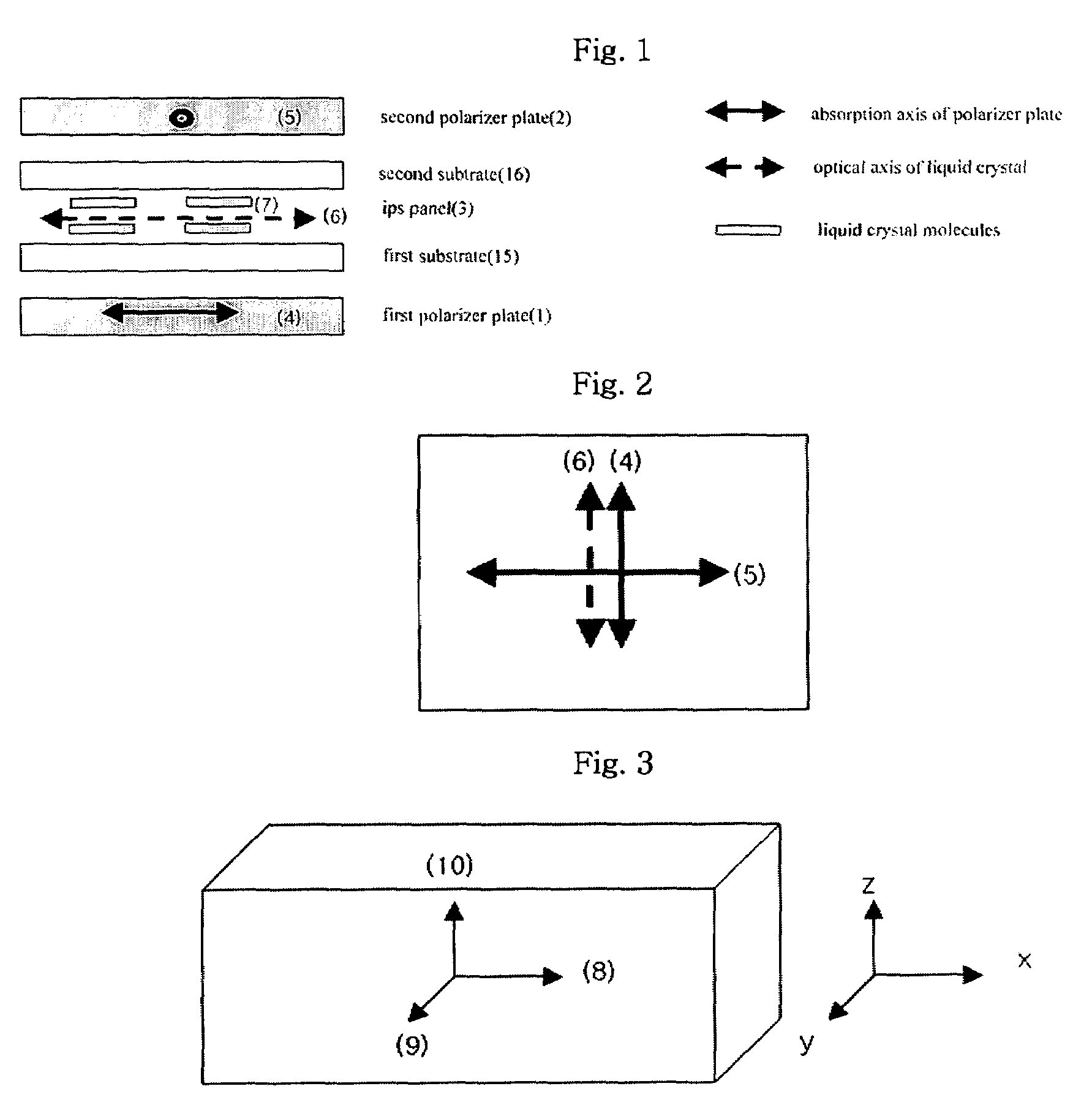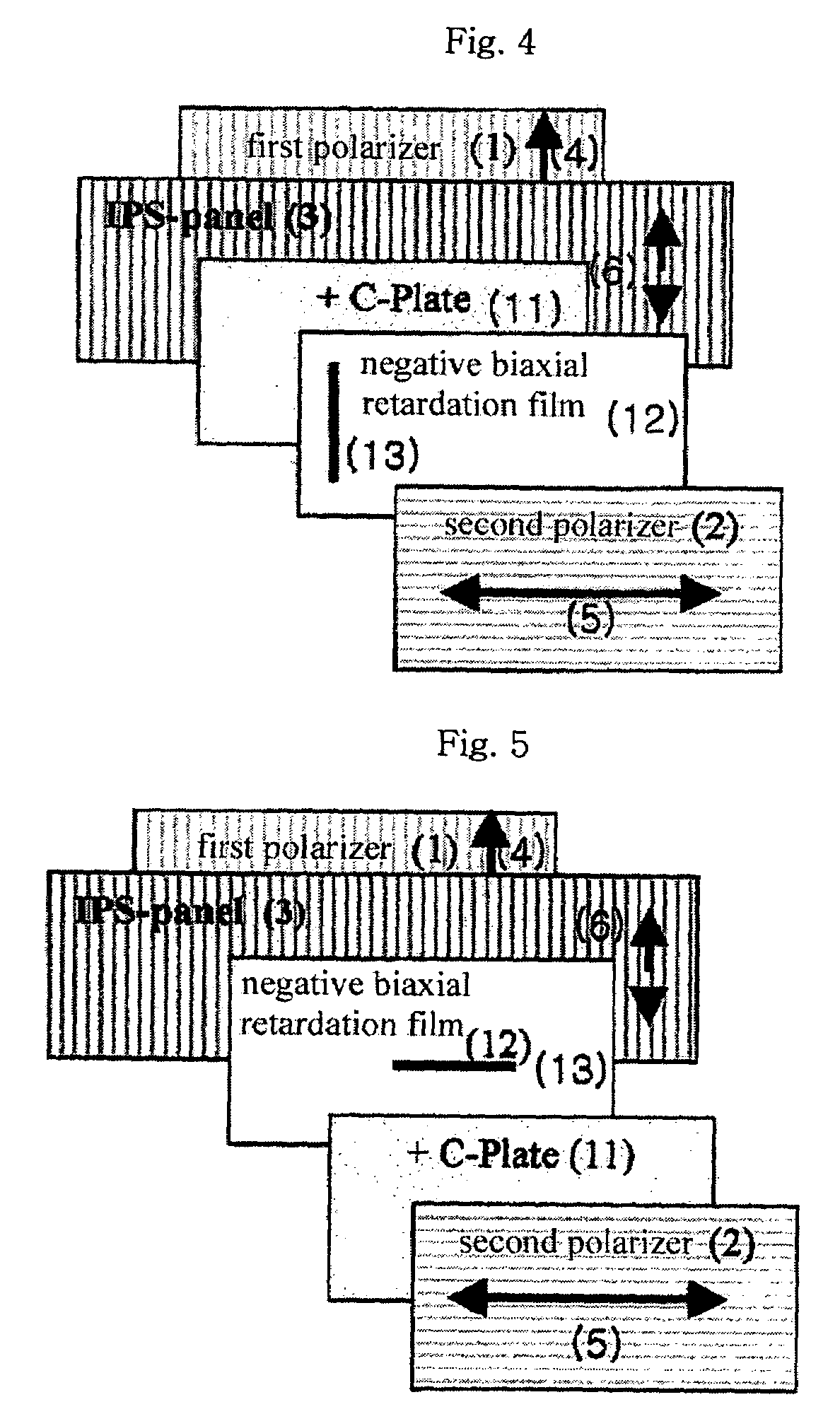In-plane switching liquid crystal display comprising compensation film for angular field of view using negative biaxial retardation film and (+) C-plate
a liquid crystal display and compensation film technology, applied in the field of liquid crystal displays, can solve the problems of low contrast ratio, no viewing-angle compensation film in the ips-lcd, and inability to disclose the use of viewing-angle compensation films, etc., and achieve the effect of low color shi
- Summary
- Abstract
- Description
- Claims
- Application Information
AI Technical Summary
Benefits of technology
Problems solved by technology
Method used
Image
Examples
embodiments
Embodiment 1
[0093]The IPS-LCD shown in Table 1 above comprises the IPS liquid crystal cell which has a cell gap of 2.9 μm and is filled with liquid crystal molecules having a pretilt angle of 3°, a dielectric anisotropy (Δε) of +7 and a birefringence (Δn) of 0.1. The negative biaxial retardation film 12 is made of a stretched TAC film and has an in-plane retardation value (Rin) of 110 nm and a thickness-direction retardation value (Rth) of −48 nm. The positive C-plate 11 is an UV cured, homeotropically aligned liquid crystal film and has a retardation value (Rth) of 133 nm. Two sheets of the polarizers comprise an internal protective film of COP having a retardation value of almost zero. The result of simulation for the minimum contrast ratio at an inclination angle of 70° with respect to all azimuthal angles in the case of the application of such viewing-angle compensation films is 150:1.
embodiment 2
[0094]The IPS-LCD shown in Table 1 above comprises the IPS liquid crystal cell which has a cell gap of 2.9 μm and is filled with liquid crystal molecules having a pretilt angle of 3°, a dielectric anisotropy (Δε) of +7 and a birefringence (Δn) of 0.1. The negative biaxial retardation film 12 is made of a stretched TAC film and has an in-plane retardation value (Rin) of 66 nm and a thickness-direction retardation value (Rth) of −128 nm. The positive C-plate 11 is an UV cured, homeotropically aligned liquid crystal film and has a retardation value (Rth) of 120 nm. An internal protective film for the first polarizer 1 is made of TAC and has a thickness-direction retardation value (Rth) of −65 nm. An internal protective film for the second polarizer 2 is a COP film having a retardation value of almost zero. The result of simulation for the minimum contrast ratio at an inclination angle of 70° with respect to all azimuthal angles in the case of the application of such viewing-angle compe...
embodiment 3
[0095]The IPS-LCD shown in Table 1 above comprises the IPS liquid crystal cell which has a cell gap of 2.9 μm and is filled with liquid crystal molecules having a pretilt angle of 3°, a dielectric anisotropy (Δε) of +7 and a birefringence (Δn) of 0.1. The negative biaxial retardation film 12 is made of a stretched TAC film and has an in-plane retardation value (Rin) of 110 nm and a thickness-direction retardation value (Rth) of −48 nm. The positive C-plate 11 is an UV cured, homeotropically aligned liquid crystal film and has a retardation value (Rth) of 133 nm. An internal protective film for the first polarizer 1 is made of COP, and an internal protective film for the second polarizer 2 is a stretched TAC film. The result of simulation for the minimum contrast ratio at an inclination angle of 70° with respect to all azimuthal angles in the case of the application of such viewing-angle compensation films is 150:1.
PUM
| Property | Measurement | Unit |
|---|---|---|
| thickness | aaaaa | aaaaa |
| thickness | aaaaa | aaaaa |
| thickness | aaaaa | aaaaa |
Abstract
Description
Claims
Application Information
 Login to View More
Login to View More - R&D
- Intellectual Property
- Life Sciences
- Materials
- Tech Scout
- Unparalleled Data Quality
- Higher Quality Content
- 60% Fewer Hallucinations
Browse by: Latest US Patents, China's latest patents, Technical Efficacy Thesaurus, Application Domain, Technology Topic, Popular Technical Reports.
© 2025 PatSnap. All rights reserved.Legal|Privacy policy|Modern Slavery Act Transparency Statement|Sitemap|About US| Contact US: help@patsnap.com



